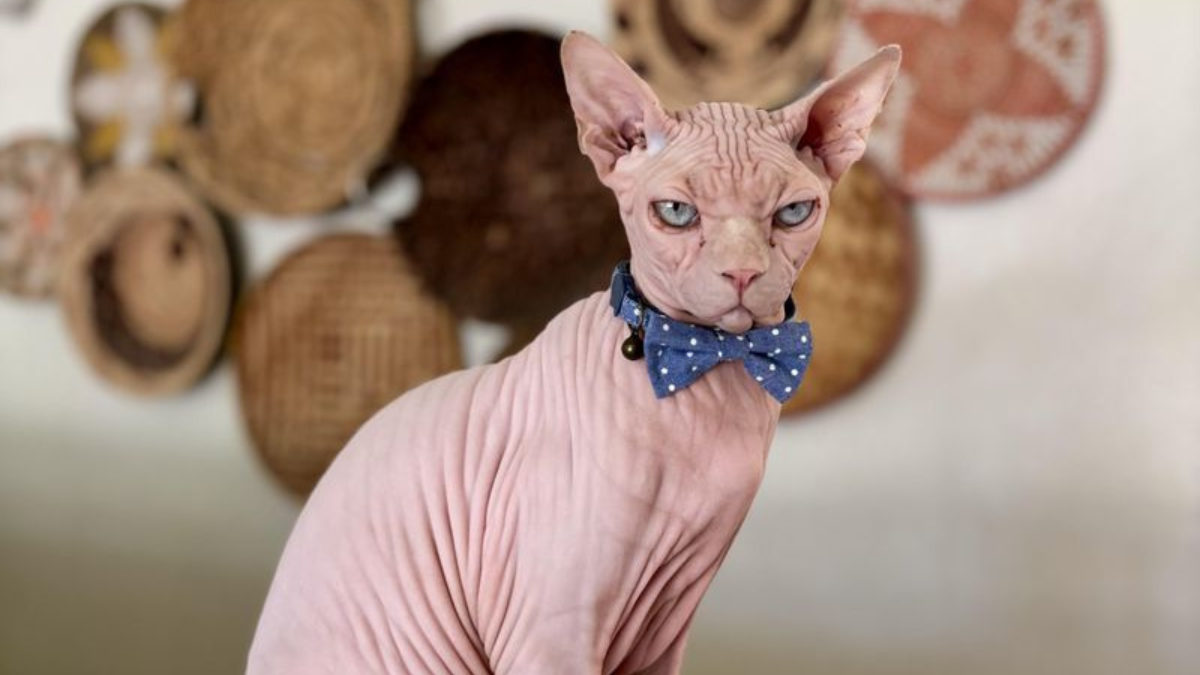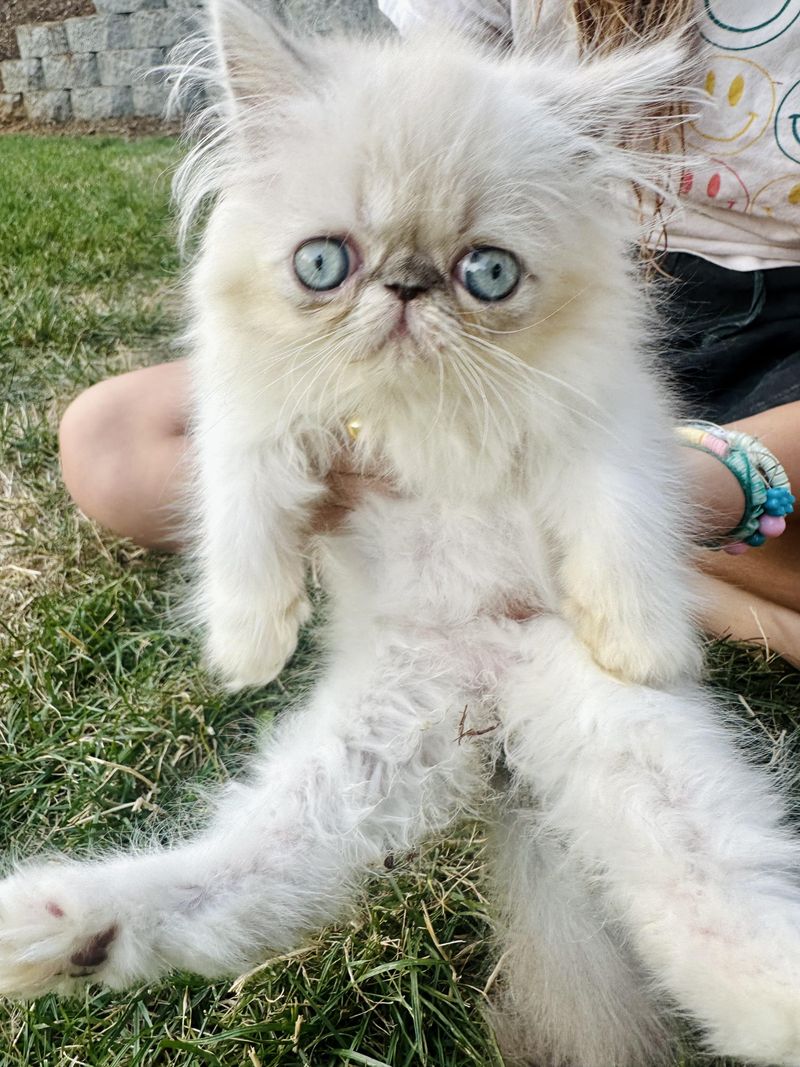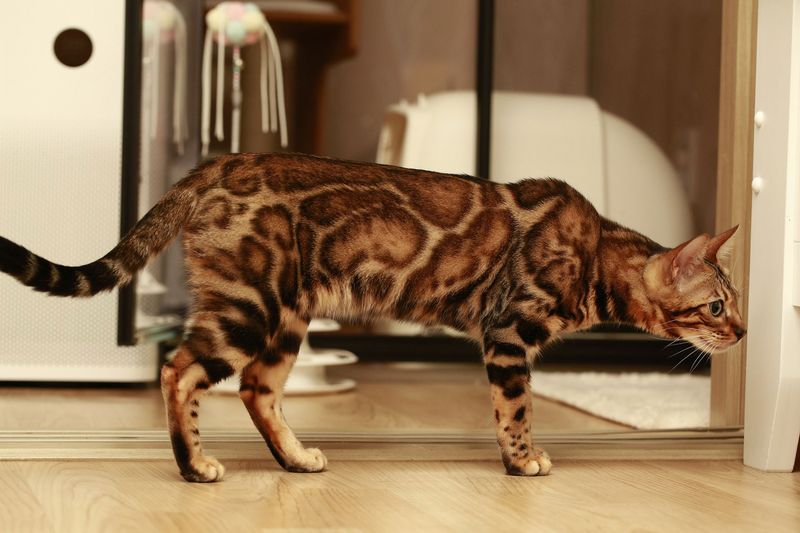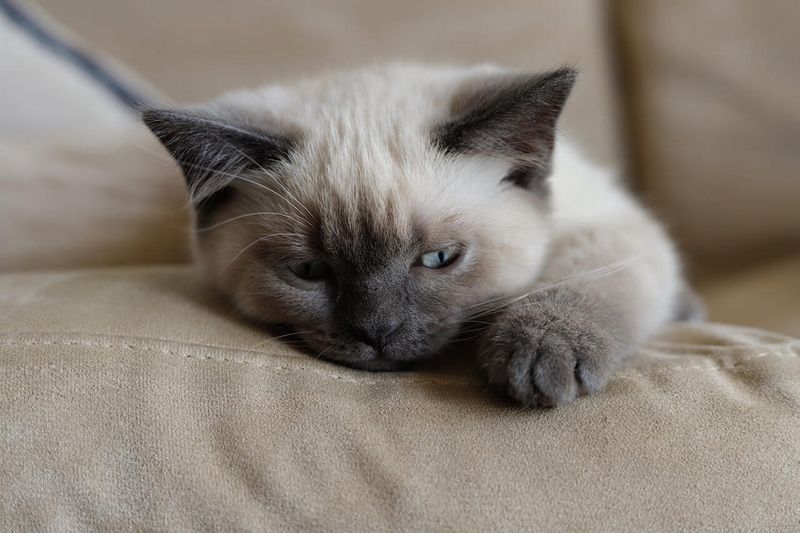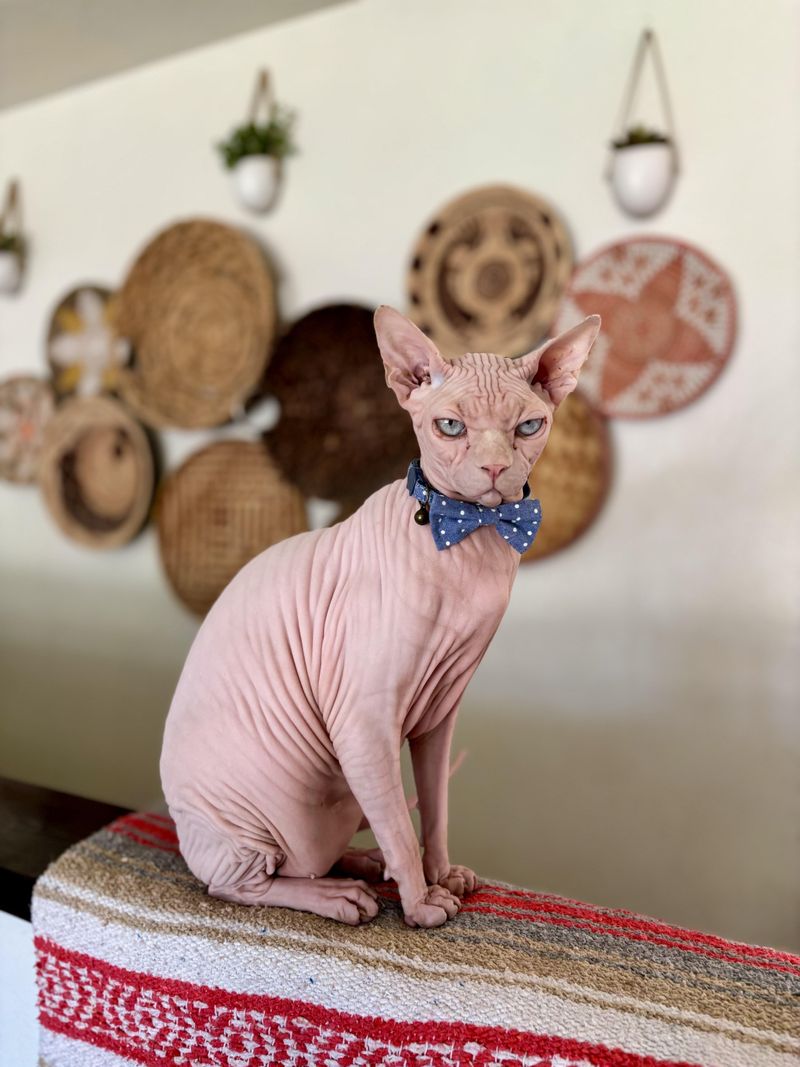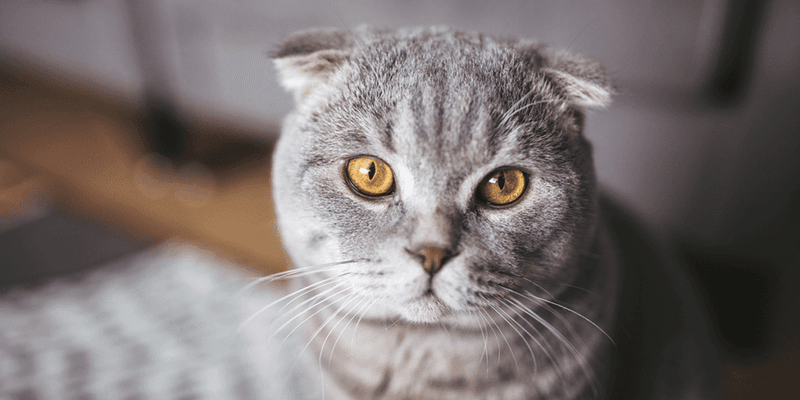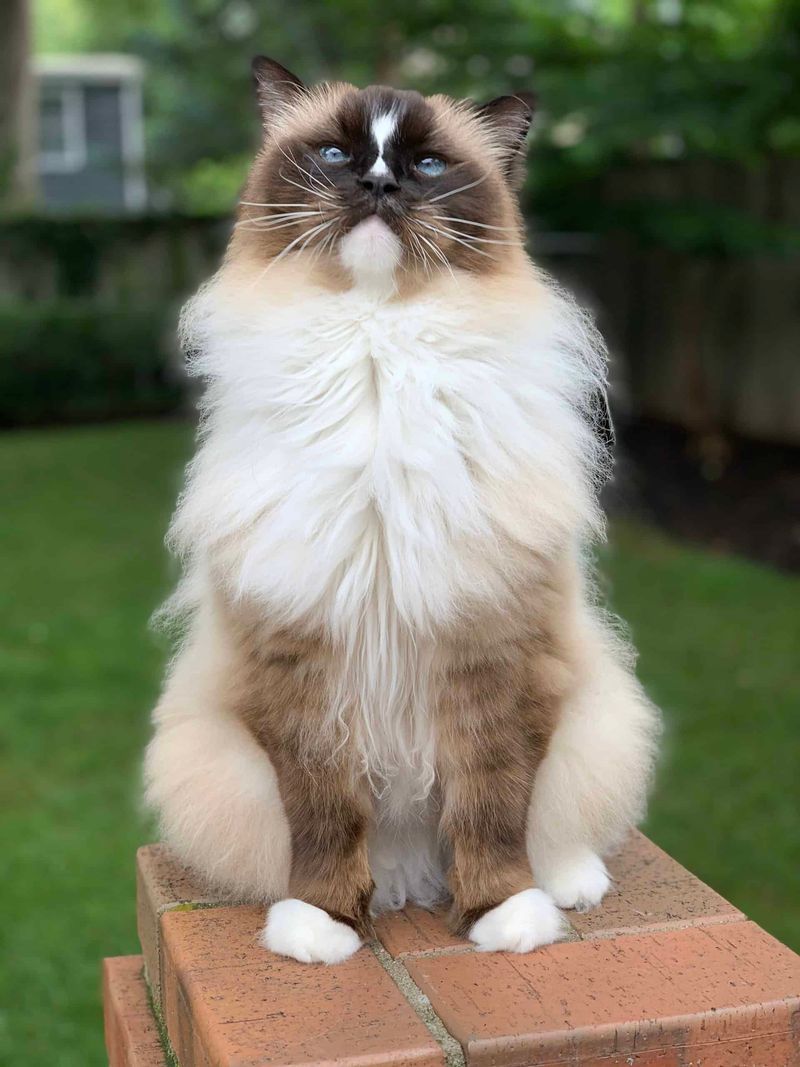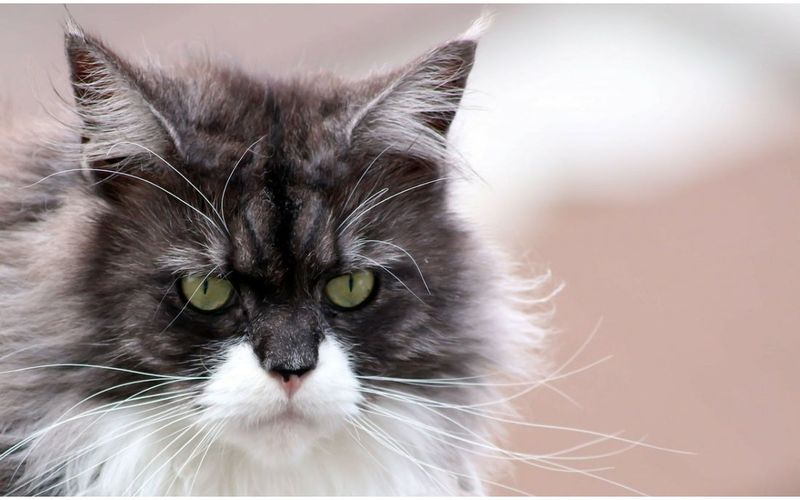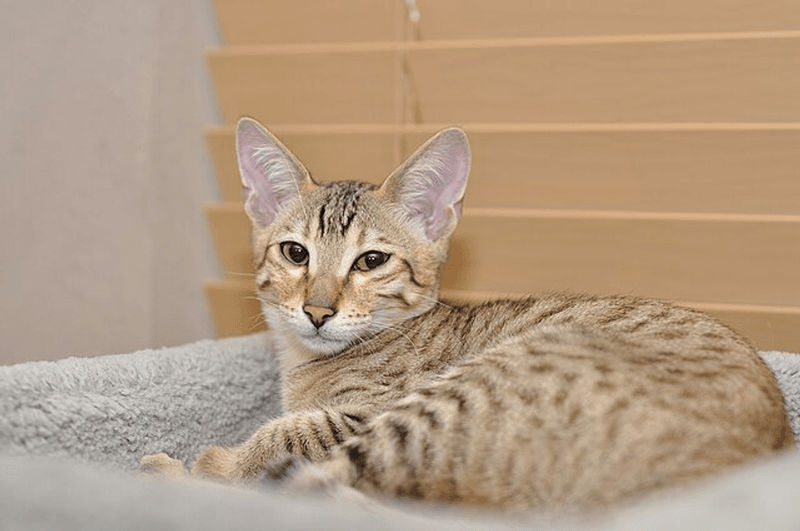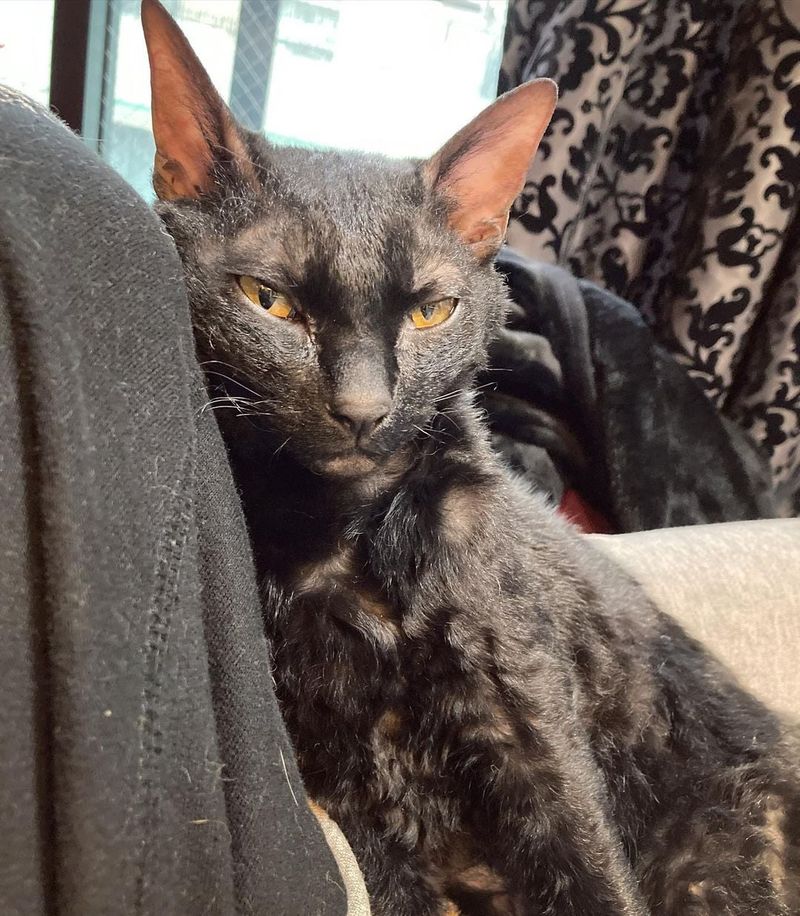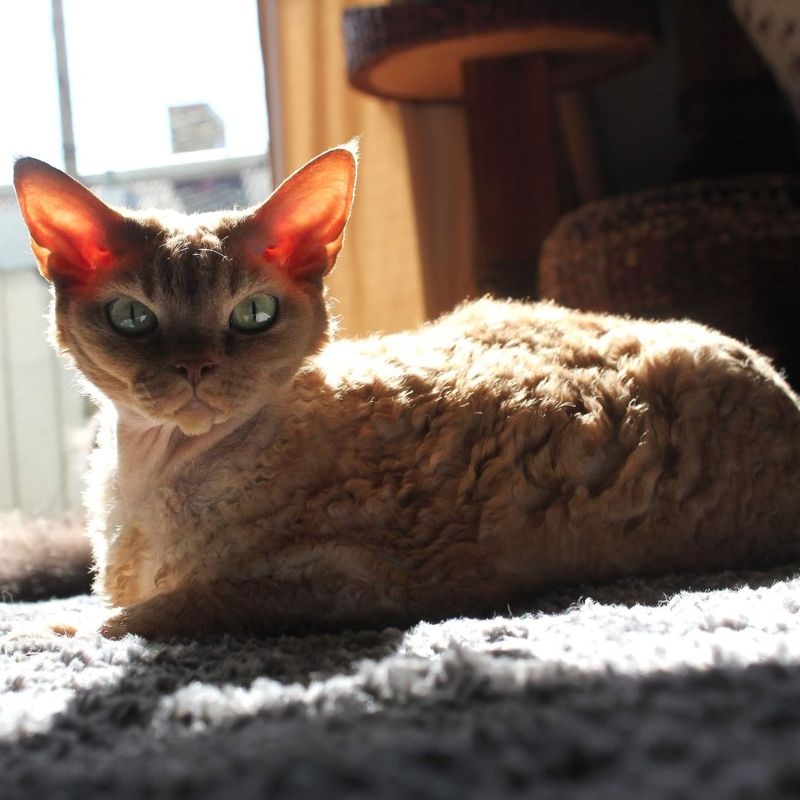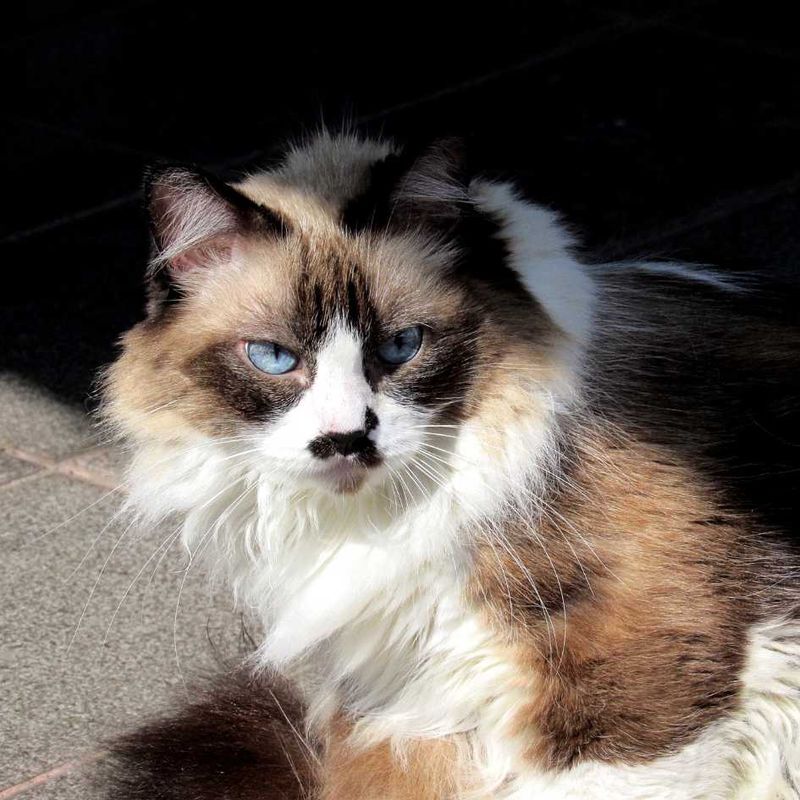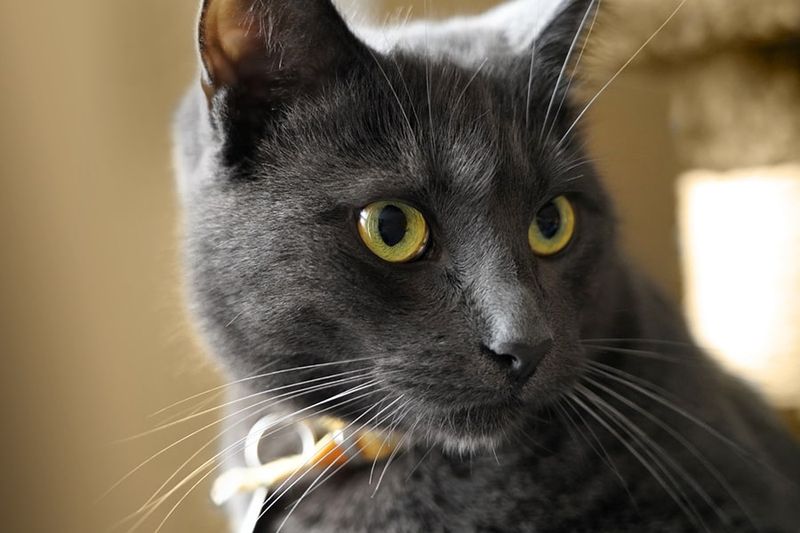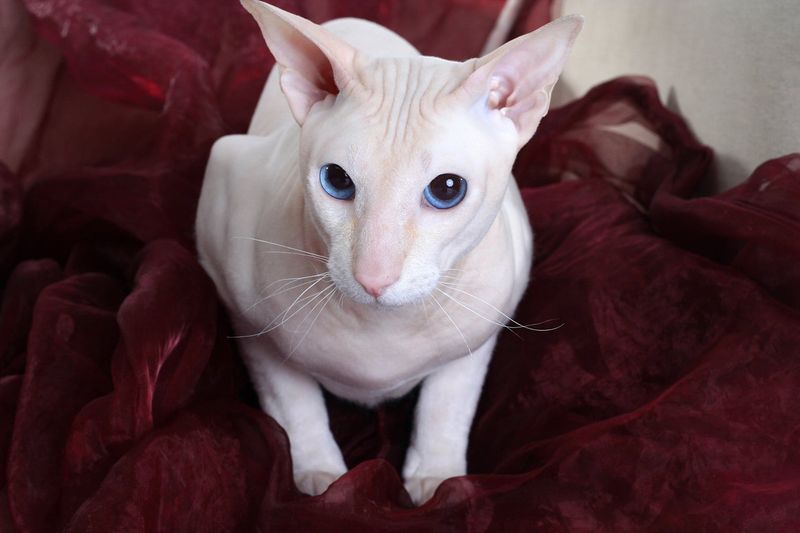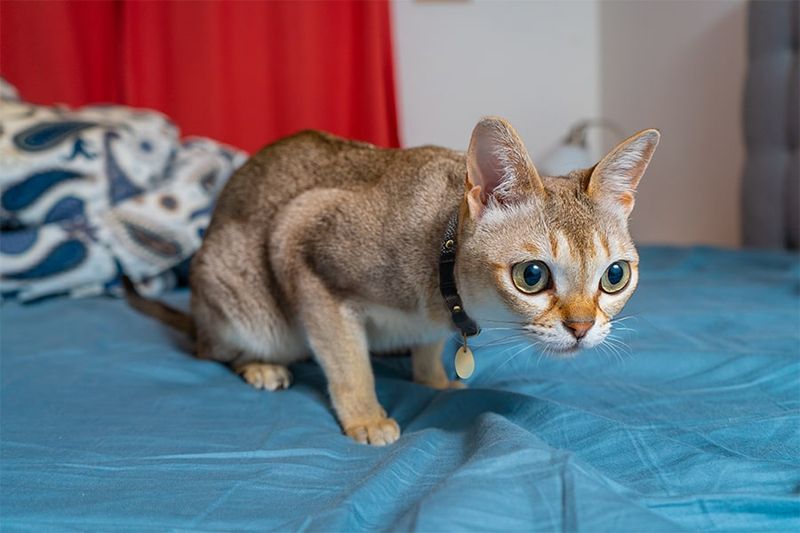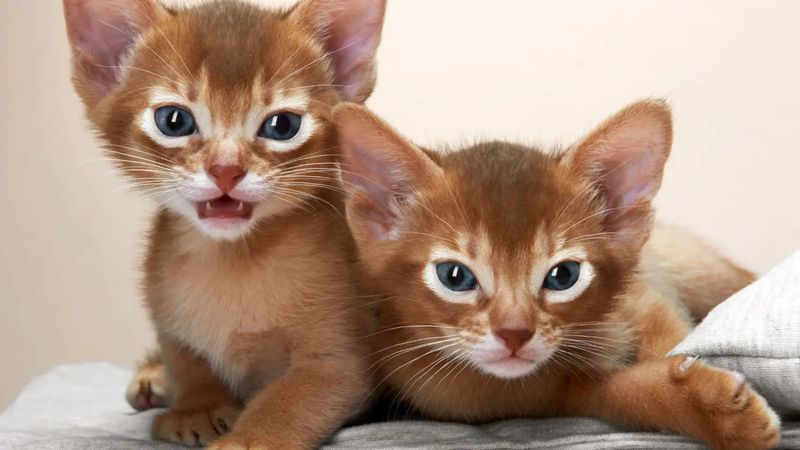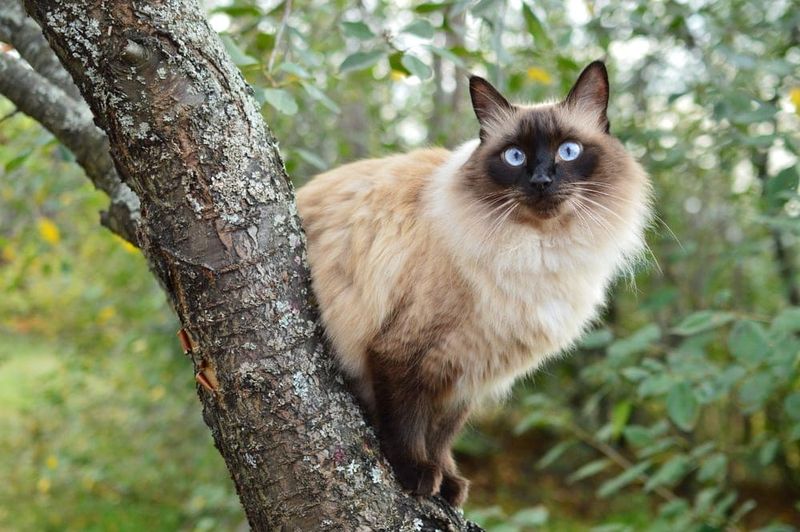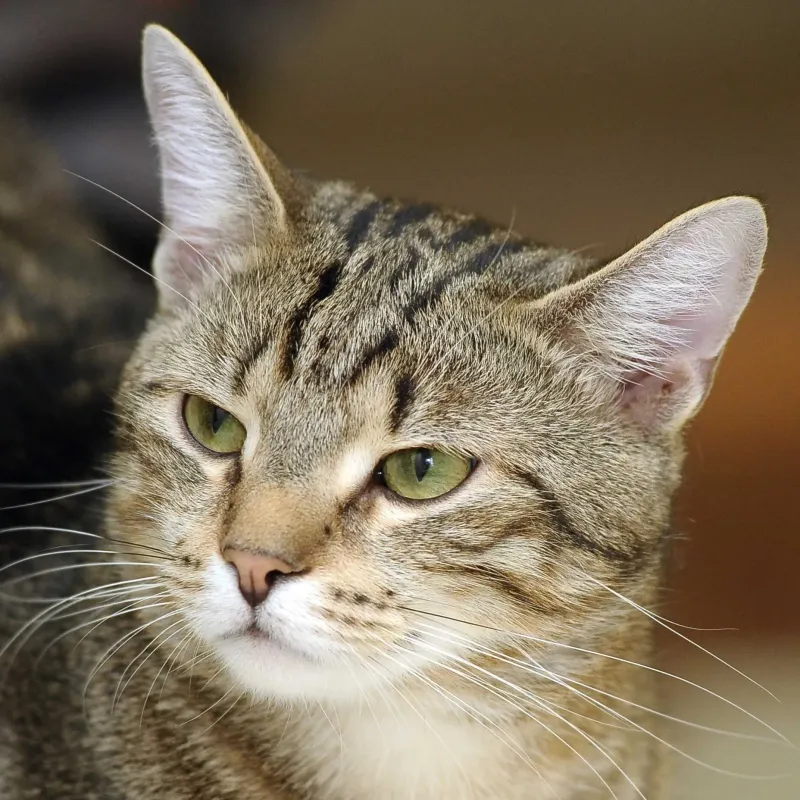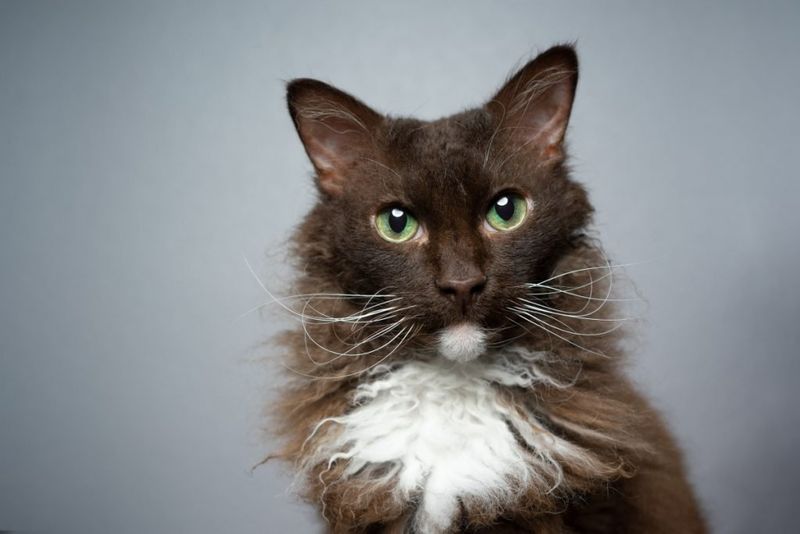📖 Table of Content:
Ever wondered which cat breeds might not be the best match for your lifestyle? While all cats have their unique charm, some breeds come with challenges that not every owner can handle. From excessive grooming needs to health issues and temperament concerns, certain cats require special care or environments. Here’s my honest take on 18 cat breeds I personally wouldn’t choose and the reasons behind these decisions.
1. Persian
The daily grooming ritual with Persians is relentless. Their long, thick fur mats easily, requiring at least 30 minutes of brushing every single day. Skip a few sessions and you’ll face painful mats that might need professional removal. Health problems plague this breed.
Their flat faces cause breathing difficulties, eye issues, and dental problems. Many Persians develop polycystic kidney disease, leading to expensive vet bills and heartbreaking health decisions. The shedding is truly extraordinary. Persian fur clings to everything—furniture, clothes, food. Even with regular grooming, you’ll find yourself constantly cleaning fur from every surface in your home.
2. Bengal
Bengals possess wild energy that never seems to diminish. These cats jump on counters, climb curtains, and sprint through houses at 3 AM like they’re being chased by invisible predators. Their athletic abilities mean no shelf or cabinet is safe.
Vocally demanding, Bengals rarely stop communicating. They chirp, yowl, and chatter constantly, especially when they want attention—which is nearly always. The noise level can rival having a talkative toddler. Boredom strikes quickly with these intelligent cats. Without constant mental stimulation through toys, puzzles, and interaction, they become destructive. Many owners discover shredded furniture and knocked-over decorations when Bengals aren’t properly entertained.
3. Siamese
While Siamese cats are famous chatterboxes, few realize how persistent and loud their meowing truly is. They’re infamous for demanding late-night conversations, their sharp yowls piercing through walls and doors no matter the hour.
Separation anxiety hits this breed particularly hard. Siamese form intense bonds with their owners and become genuinely distressed when left alone. Working long hours outside the home often leads to destructive behaviors and excessive vocalization. Their intelligence makes them masterful manipulators. Siamese quickly learn which behaviors get attention and will repeat them endlessly, training you rather than the other way around.
4. Sphynx
Hairless doesn’t mean maintenance-free. Sphynx cats need regular bathing to remove body oils that normally absorb into fur. Without this grooming, they develop a greasy film on their skin. Their exposed skin makes them extremely sensitive to sunlight and cold temperatures.
You’ll need to apply pet-safe sunscreen and provide sweaters during the winter months. The heating bills alone would break my budget! These cats seek warmth constantly, often burrowing under blankets or pressing against radiators. Their high metabolism means they eat significantly more than other cats, adding another unexpected expense.
5. Scottish Fold
The adorable folded ears come at a serious health cost. Scottish Folds suffer from a genetic cartilage disorder that affects more than just their ears. This mutation causes painful joint problems and arthritis, often beginning when cats are still young.
Ethical concerns surround this breed. The gene that creates the signature folded ears is actually a mutation that shouldn’t be deliberately bred. Many veterinarians and animal welfare organizations oppose breeding Scottish Folds due to the inherent health issues. Treatment costs add up quickly. Managing their joint pain requires regular medication, special accommodations, and frequent veterinary visits. Watching a cat suffer from preventable genetic conditions breaks my heart and empties my wallet.
6. Ragdoll
With a gentle and docile temperament, Ragdolls often lack the natural instincts to protect themselves. This makes outdoor time potentially dangerous, as they may not avoid threats like unfriendly animals or busy streets. Their big size also means extra caution is needed.
Adult males can reach 20 pounds, requiring larger litter boxes, carriers, and more food. Moving them during emergencies becomes difficult, especially if they go limp as their name suggests. Health screening costs are substantial. Responsible Ragdoll breeders test for hypertrophic cardiomyopathy, a heart condition common in the breed. Even with testing, these cats often develop heart problems later in life, leading to heartbreak and expensive treatments.
7. Maine Coon
These giant cats, with males weighing as much as 25 pounds, demand bigger-than-average supplies. From oversized carriers to reinforced furniture, regular cat gear often falls short. And don’t forget, maintaining their thick coats means a significant grooming commitment.
Their semi-long fur requires daily attention, especially during seasonal shedding periods. The tufted paws collect debris and litter, tracking it throughout your home. Genetic health concerns plague the breed. Hip dysplasia, spinal muscular atrophy, and hypertrophic cardiomyopathy run through many bloodlines. Screening tests cost hundreds of dollars, and treating these conditions can run into thousands over a cat’s lifetime.
8. Savannah
The price of a first-generation Savannah kitten can soar to $20,000, reflecting their exotic lineage. However, their serval ancestry means they may not always fit the typical home life, and legal hurdles—like bans and restrictions—add another layer of complexity for prospective owners.
Moving homes becomes extraordinarily difficult when your pet might not be legal in your new location. Insurance companies often reject coverage for homes with Savannah cats. Their wild heritage classifies them as exotic animals rather than domestic pets in many policies. Finding rental housing becomes nearly impossible with these large, part-wild cats.
9. Cornish Rex
Because their coat is missing guard hairs, Cornish Rex cats often feel greasy, as their delicate undercoat quickly accumulates oils. Bathing is a frequent requirement, though not a favorite activity, and their sensitivity to temperature makes proper care essential.
Their minimal coat provides little insulation against cold, requiring heated beds and sometimes even cat clothing during winter months. Drafty homes become uncomfortable or even dangerous for them. Skin problems develop frequently with this breed. Seborrhea, sunburn, and other dermatological issues require special shampoos and sometimes medication. The thin coat offers little protection against minor injuries, leading to frequent small cuts and scrapes.
10. Devon Rex
Devon Rex cats shed their delicate curly fur constantly despite their seemingly sparse coat. The fine hairs work their way into fabrics and prove nearly impossible to remove completely from furniture and clothing.
Ear problems plague this breed due to excessive wax production. Their large, low-set ears collect dirt and develop infections without regular cleaning. The cleaning process itself becomes a battle as most Devon Rex cats strongly resist ear maintenance. Mischief becomes an art form with these intelligent cats. Devon Rex cats learn to open doors, cabinets, and refrigerators. Their problem-solving abilities mean nothing is safe—they’ll figure out child locks and other deterrents with surprising speed.
11. Himalayan
Combining Persian fluff with Siamese sass, Himalayans require serious upkeep. Daily grooming is essential to keep their dense coat mat-free, and their vocal nature means they’re always ready to chat. Their flat faces lead to tear staining and constant eye cleaning to keep them looking fresh.
Without this care, the fur around their eyes becomes crusty and uncomfortable. Breathing difficulties affect many Himalayans due to their brachycephalic (flat-faced) structure. Snoring, wheezing, and exercise intolerance are common. During hot weather, they struggle to regulate body temperature, requiring constant air conditioning to prevent heat stress.
12. Korat
The bond Korats build with their owners runs deep, sometimes triggering separation anxiety. When on their own, they may stop eating or become destructive, leaving owners to struggle with guilt over time spent away.
Noise sensitivity affects this breed profoundly. Korats startle easily at typical household sounds like blenders, vacuum cleaners, or even loud conversations. This heightened sensitivity can lead to stress-related health issues over time. Finding a Korat requires extraordinary patience and connections. As one of the rarest breeds, waitlists can extend years, and the limited genetic pool raises concerns about inbreeding depression and associated health problems.
13. Peterbald
Without a protective coat, Peterbald cats’ skin is prone to damage and sunburn, requiring diligent care. They need weekly baths to manage oil buildup, but finding gentle products is crucial to avoid irritation.
Temperature regulation poses a constant challenge. These cats get cold easily in air-conditioned rooms and can overheat quickly in direct sunlight. Maintaining a comfortable environment means adjusting your entire home’s climate control to suit their needs. Finding a veterinarian with Peterbald experience proves surprisingly difficult. Many vets rarely see this uncommon breed and may lack knowledge about their specific health concerns. This specialized care often means traveling further and paying premium prices for appropriate medical attention.
14. Singapura
Forever kitten-sized, Singapuras also stay kitten-dependent, shadowing you from room to room and demanding constant interaction. Their tiny stature adds practical challenges to their high-maintenance personality.
As one of the smallest cat breeds, Singapuras can slip through tiny openings in windows or furniture. Their diminutive size makes them vulnerable to injuries from jumping or falls that larger cats would handle easily. Genetic health concerns stem from the breed’s extremely limited foundation stock. All Singapuras trace back to just three cats, creating a concerning lack of genetic diversity. This narrow gene pool leads to an increased risk of recessive disorders appearing unexpectedly.
15. Abyssinian
Abyssinians never stop moving. Their extreme energy levels mean they’re constantly jumping, climbing, and exploring. Providing adequate exercise becomes a full-time job, and failing to do so results in destructive behavior out of boredom and frustration.
Dental problems run rampant in this breed. Many Abyssinians develop gingivitis and periodontal disease at a young age, requiring expensive dental cleanings under anesthesia and sometimes tooth extractions. Daily tooth brushing becomes necessary but rarely welcomed by the cat. Progressive retinal atrophy affects many Abyssinian bloodlines. This genetic condition causes gradual blindness, often beginning before the cat reaches middle age. Watching a previously active cat lose confidence as their vision deteriorates becomes heartbreaking.
16. Balinese
Known for their constant chatter, Balinese cats inherit a loud and persistent voice from their Siamese ancestors. They’ll comment on all household happenings around the clock, leaving little quiet time. And despite their hypoallergenic reputation, they can still trigger allergies in sensitive individuals.
While they produce less Fel d 1 protein than some cats, they still trigger reactions in many allergy sufferers. The marketing as “allergy-friendly” creates false hope and potential rehoming situations. Grooming requirements exceed expectations for a medium-haired cat. Their silky coat tangles easily, especially around the neck and tail. The fine hair mats quickly if not brushed several times weekly, creating painful skin conditions if neglected.
17. Tonkinese
Always in the middle of the action, Tonkinese cats demand your attention at all times. They love joining you while you cook or work, which can make it hard to concentrate. If you have a hectic schedule or work long hours, they might not be the ideal companions.
Escape artist tendencies create safety concerns. Tonkinese learn to open doors and windows, requiring childproof locks throughout the home. Their determination to explore makes them flight risks whenever doors open. Stubborn streaks run deep in this breed. Once a Tonkinese decides on a behavior—whether sleeping on your face or climbing certain curtains—changing their mind becomes nearly impossible. Training challenges emerge as they follow their own agenda rather than household rules.
18. LaPerm
Despite their curly fur, LaPerms are constant shedders. Their soft curls scatter around and easily tangle into stubborn mats on fabrics. This unusual texture makes hair removal from clothing and furniture especially tricky. To top it off, their coats can change unpredictably, with curls sometimes fading during molting or hormone fluctuations.
Some kittens born with straight hair develop curls later, while others lose their curls permanently as adults. Finding experienced groomers becomes surprisingly difficult. Many professional groomers rarely encounter this uncommon breed and may improperly cut or treat their special coat. Home grooming requires specific techniques that differ from both short and long-haired breeds.
